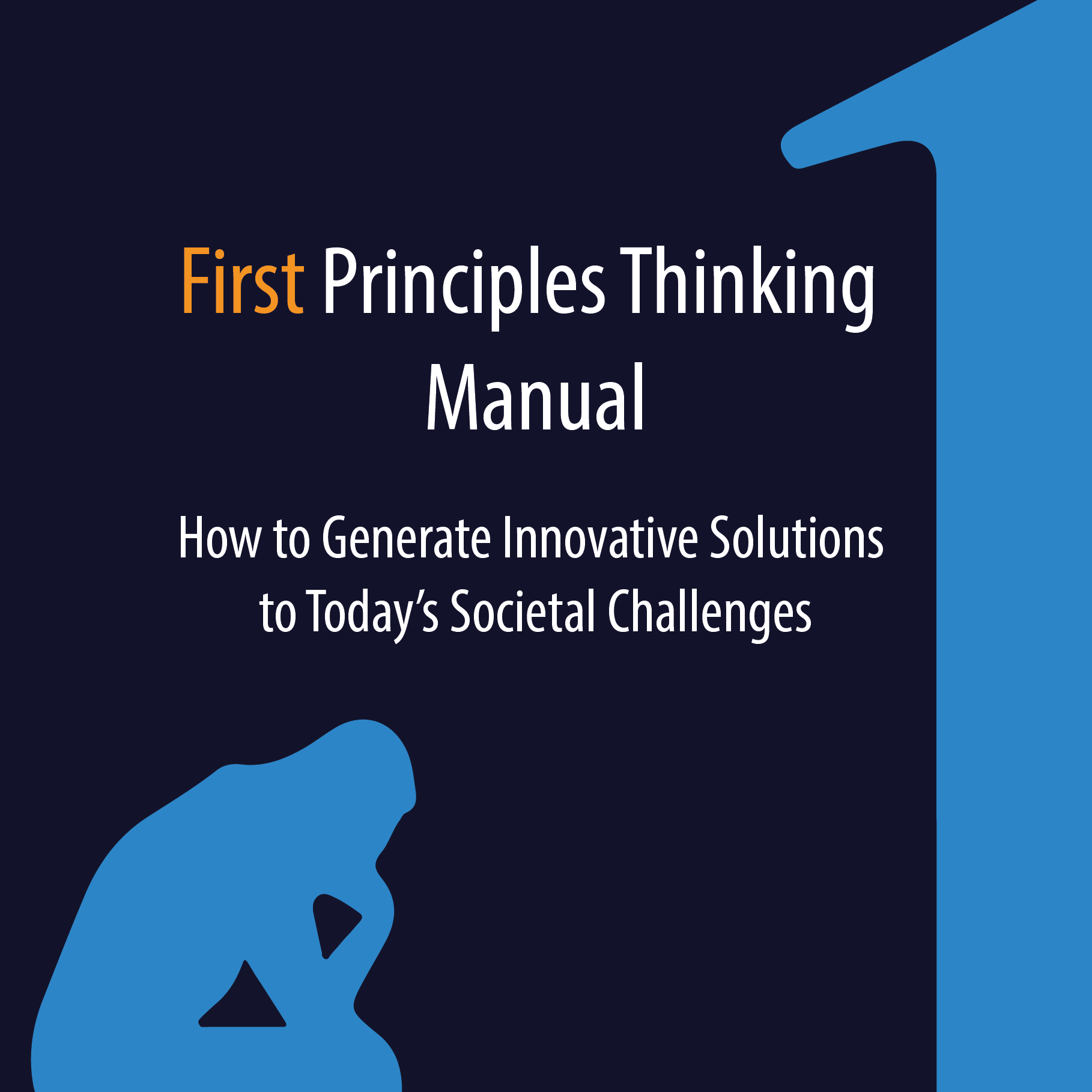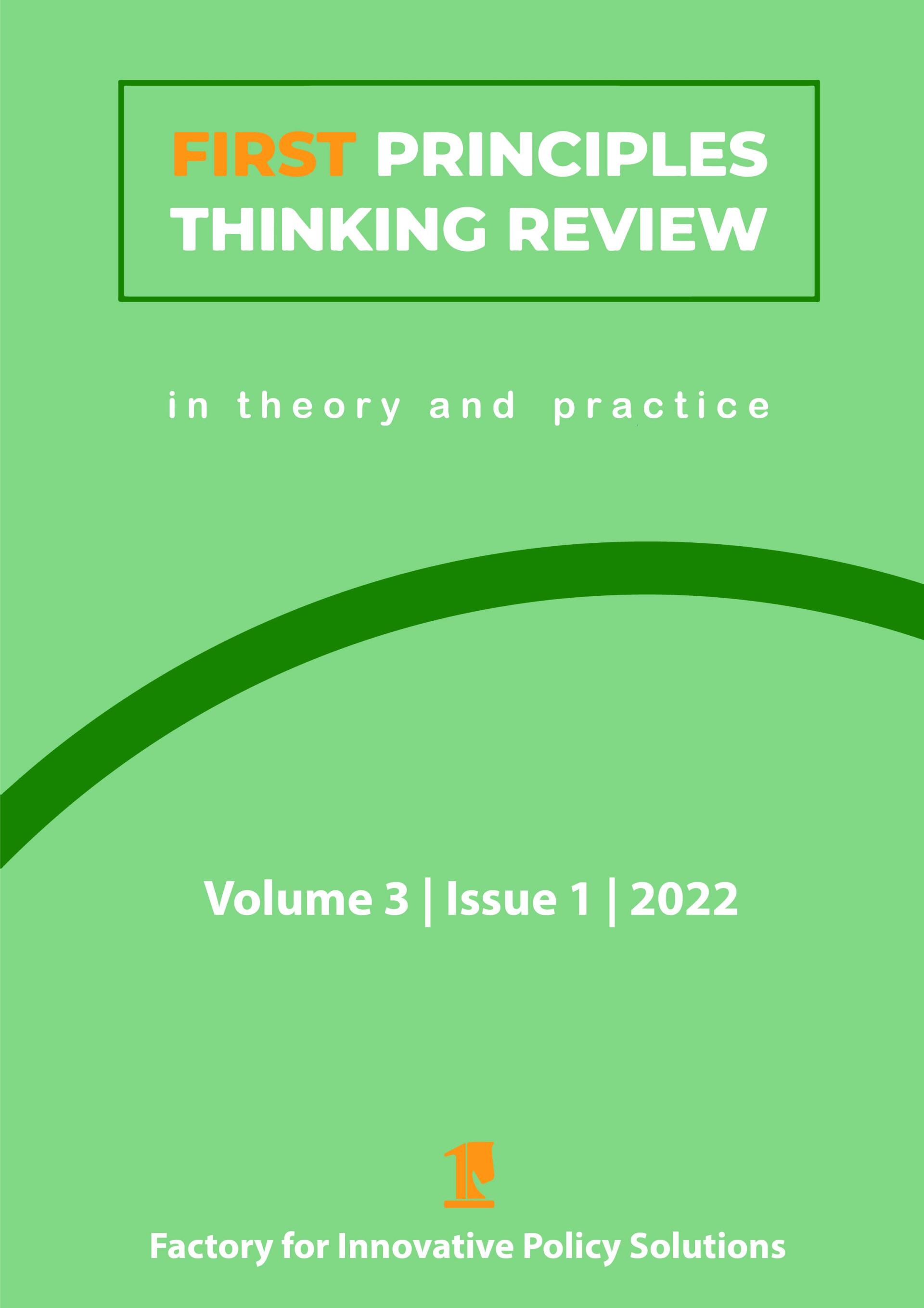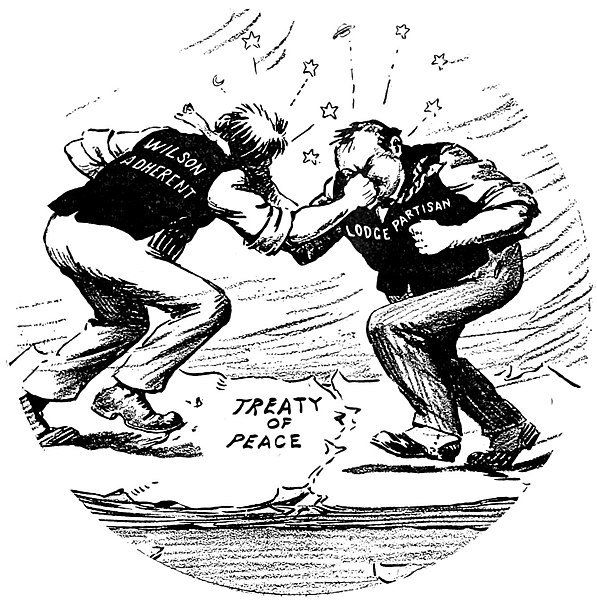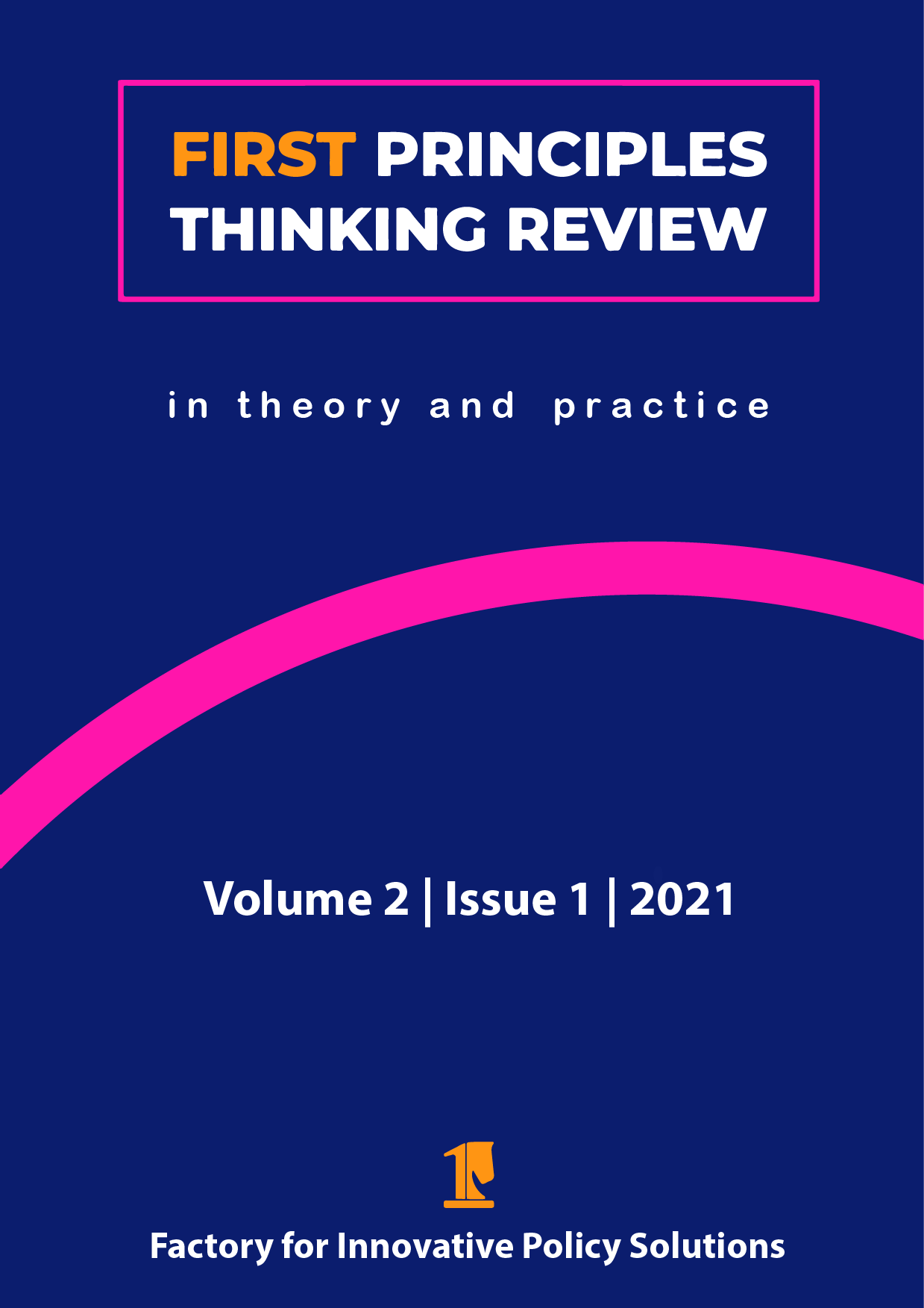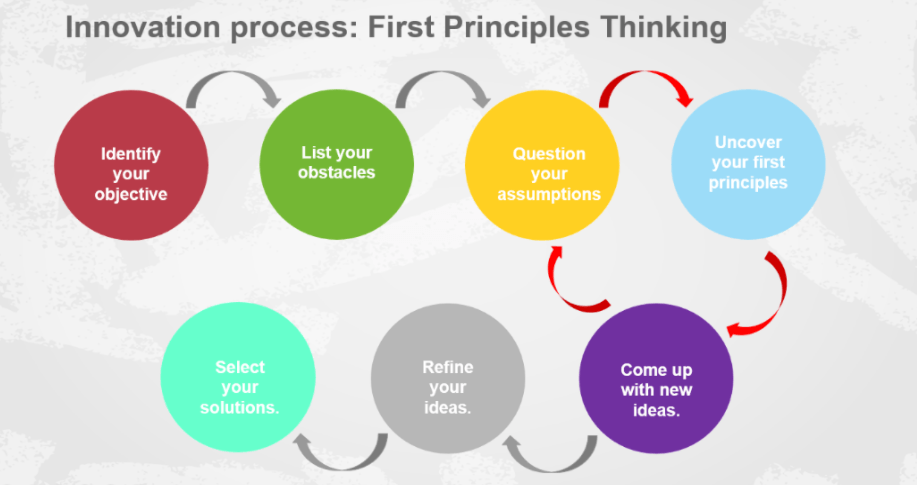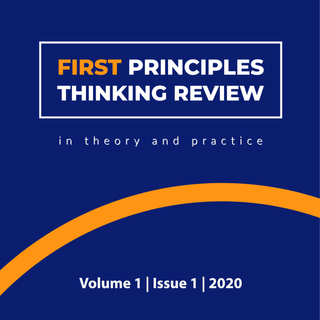What I Discovered Writing a Thesis on First Principles Thinking: An Interview with Kmar Hachicha
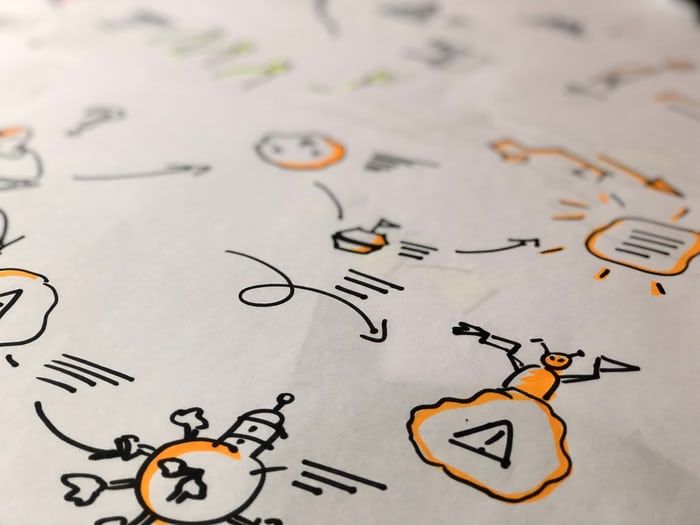
Photo by Unsplash
In the following interview, Kmar Hachicha, a graduate student from the Technical University of Brunswick, offers the FIPS Team and its readers a unique insight into her novel research on first principles thinking as an innovation process. In the conversation that follows, she tells us about her thesis project, what she discovered as well as her experiences working with first principles thinking.
Can you tell us something about yourself?
I am Kmar Hachicha, 26 years old, and I’m a first principles thinker. I was born and raised in the beautiful country of Tunisia in north Africa. For my studies I moved to Germany in 2014. I studied Biotechnology in the bachelor, and I am currently doing my master in Bio- and Chemical Engineering.
I also volunteer as a trainer for soft skills and self-leadership. During my studies I worked as a student assistant in the laboratory, as a tutor for project and quality management and as a working student in an engineering company for 3D process flow simulation. I am very fascinated by the methods and tools that make every day’s work efficient and goal oriented like the pomodoro-method, or the pareto-principle or 4mat. I read in my free time about the theories concerning human interactions, communication and motivation. I like running and I love good food.
First principles thinking (FPT) is only one of several problem-solving methods. Why did you decide to focus your research specifically on FPT?
For a year I have been hearing about the innovation process first principles thinking and how it promises powerful solutions through the work based on the fundamentals of first principles. As a passionate person for methods this awakened my curiosity. Starting to read about it online and to watch videos and interviews on FPT I realized that except for
First Principles Thinking for Societal Problem-Solving: A Manual to Generate Innovative Solutions to Today’s Challenges, published by the Factory for Innovative Policy Solutions (FIPS), there are no further scientific studies and investigations on the process. Right away I saw the research gap and was determined to take the opportunity to contribute to the development and establishment of first principles thinking. At this point I want to thank Prof. Dr.-Ing. Sabine C. Langer from the Technical University of Brunswick, who is passionate about innovation and curious about innovation topics. She made it possible for me to write my project thesis on the subject and supported me all the way till the end.
What did your research process look like, and what did you discover?
In my student project thesis I offered interactive online workshops to students, in which they understand FPT and use it in the case study of reducing screen time on their phone, tablet, computer, TV, etc. after work. They worked through the objective of reducing screen time with FPT as a team of 3, adding me as a moderator. At first, I tried to gather every possible description of the process that was available. I then decided to choose the process steps of FIPS since it was the only process description that was detailed enough to be used in practice:
| Step | Action |
|---|---|
| 1 | Identify your objective |
| 2 | List your obstacles |
| 3 | Question your assumptions |
| 4 | Uncover the first principles |
| 5 | Come up with new ideas |
| 6 | Refine your ideas (optional) |
| 7 | Select your solutions (optional) |
In the second step I expanded FPT with the goal of making it less exhausting. So instead of going through all seven steps of the process in a linear way, I added a twist. Originally in step 3 all the assumptions are going to be questioned all at once for all the obstacles. The same for step 4 with uncovering the first principles and in step 5 with coming up with the solutions. The change consists in the execution of the steps 3, 4 and 5 separately for each obstacle alone (red arrows in the flowchart below). So, for example, if the obstacle is no time to achieve your goals, you would first question if you really have no time. Then you would uncover the first principle(s) behind it, which could be that those goals don’t really interest you. And from this first principle(s) you come up with a solution or two like finding what really motivates you or booking a seminar with a life coach. Also, when trying to come up with solutions in step 5, it is recommended to use the previously uncovered first principles for the other assumptions and try to combine them for creating solutions.
Flowchart of the process of first principles thinking as investigated in my thesis research
Finally, I offered the workshops as a way of validation of the process of first principles thinking. The participants get to know each other, then discover the process and finally use it in a case study and evaluate it with the help of a survey. I discovered that each workshop leads to different solutions for the same case study. One of the solutions was creating a list with all the activities that could be done, because they realized as a first principle that they didn’t know what other possible activities they could do. Another solution was planning beforehand an appointment that occurs after the screen time so that the screen time is limited. I find this personally a proof of the ability of first principles thinking to create solutions that are diverse. Different solutions are developed based on the perceived obstacles and the people going through the process.
In my opinion there are two critical steps in the process of first principles thinking. The first is to take enough time to list all possible obstacles in step 2. If not all obstacles are listed, the solutions won’t be as powerful as they should be. Step 3 of questioning the assumptions is very challenging and crucial. It is the step that leads to uncovering the first principles. That’s why using all the possible techniques to question the assumptions and to be able to dive deep into each question, making the difference between a fake first principle or a real one, is highly important. It is challenging to find the right questions to ask to question the assumptions with the right facts and arguments. But it has to be done, otherwise the process isn’t successful. This step requires a lot of time, a sharp mind and questioning skills.
How did your participants evaluate FPT? Do you agree with their assessments of the advantages and disadvantages?
The participants find that the first principles thinking process is 91% innovative and develops new ideas. 88% of the participants said they would use the process to generate innovative solutions. The process of first principles thinking was shown to be structured and logical. They also found that the implementation of the process in an online setting was very fitting and efficient.
The participants expressed some fears and concerns about step 3 toward questioning the assumptions. They felt that they needed more guidance and methods to use first principles thinking on their own without the support of a moderator. Since questioning the assumptions is a very intensive step with a lot of thinking and analyzing, it gets hard in my opinion to do the thinking and keep an outsider overview on the quality of the questioning. Reaching a thinking blockage while questioning is easy to solve with the help of the moderator and hard when the person who's having the blockage is trying to find a way around it by him- or herself.
The adjustment with steps 3, 4 and 5 as a loop process for each assumption was seen as inefficient by some participants because the solutions sometimes repeated themselves. The repetition occurred through the discovery of further first principles in further process loops of step 3, 4 and 5 that only strengthen previously discovered first principles. I don’t agree with the participants on this point, but I see their point about the risk of repetition. Working each assumption separately has more benefits in my opinion. First, the participants focus only on one assumption and work through it till the end without being disturbed or stopping in order to work through another assumption. Second, the loop process in step 3, 4 and 5 enhances the satisfaction of the participants and their motivation. Creating solutions in between is like small success along the big first principles thinking process. This gives the participants the energy to keep going and keep doing the exhausting and extensive work of questioning the assumptions.
How do you believe that the FPT process could be improved? Would you recommend any modifications to a future edition of FIPS’ manual?
I believe that the possibility of the loop process for steps 3, 4 and 5 should be taken into consideration when working on a very complex challenge that would take days to solve. I believe this will keep the motivation and energy to go through all the assumptions lying behind the obstacles. To deal with repeated solutions or slightly different solutions, step 6 to refine the solutions can be dedicated to filter and merge the solutions.
For a further version of the FIPS manual, I suggest a guideline for step 3 with a list of possible methods and question clusters to use while questioning the assumptions. This would empower individuals to use first principles thinking frequently with less concerns or fears of not getting further if they meet a thinking blockage.
Do you think that you will continue to use FPT in the future? If so, how?
Since I got to know first principles thinking deeper and better, I have been using it daily. I am not using all seven steps of the process daily, but I adopted the thinking mechanism of first principles. Whenever I am confronted with a challenge, privately or at work, I think of the obstacles first. I ask myself or people around me: what is keeping us from achieving the goal? Then I start questioning this obstacle till I find the first principle (the fact that I can’t further question). Based on this discovery I try to develop a solution.
What I mostly learned out of this experience is that no matter what I think my obstacles are, there is always something else that lies behind them. The obstacles are usually only a shell or a mask that hides assumptions that need to be questioned.
References
Verkerk, A., & Grass, K. (2019).
First Principles Thinking for Societal Problem-Solving: A Manual to Generate Innovative Solutions to Today’s Challenges. Factory for Innovative Policy Solutions.
https://www.innovativepolicysolutions.org/first-principles-thinking/manual
Apply first principles thinking yourself?
Would you like to apply first principles thinking yourself and have your problem-solving experience published in the First Principles Thinking Review? Then be sure to check out the submission guidelines and send us your rough idea or topic proposal. Our editorial team would be happy to work with you to turn that idea into an article.
Share this page
Disclaimer : The views, thoughts and opinions expressed in submissions published by FIPS reflect those of the authors and do not necessarily reflect the views held by FIPS, the FIPS team or the authors' employer.
Copyrights : You are more than welcome to share this article. If you want to use this material, for example when writing an article of your own, keep in mind that we use cc license BY-NC-SA. Learn more about the cc license here .
What's new?
